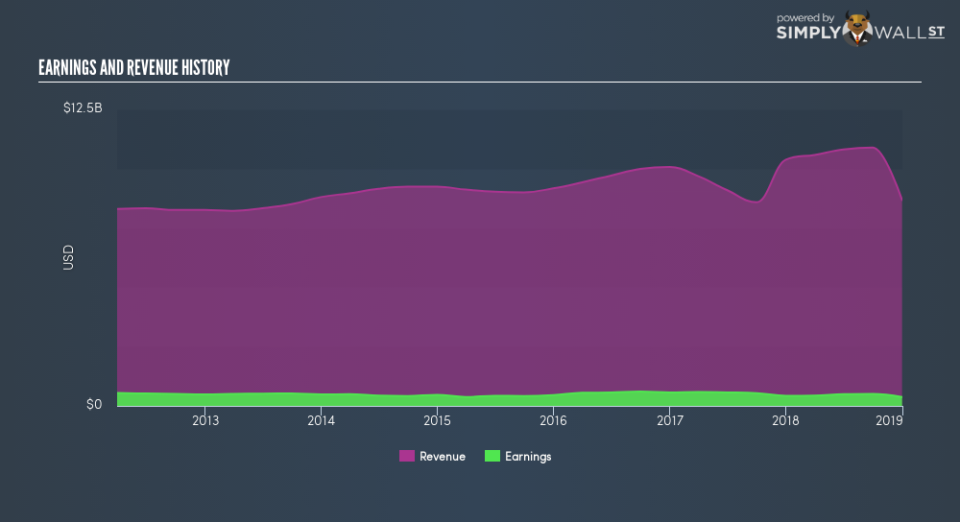Interested In Autoliv, Inc. (NYSE:ALV)? Here’s How It Performed Recently

Want to participate in a short research study? Help shape the future of investing tools and you could win a $250 gift card!
When Autoliv, Inc. (NYSE:ALV) announced its most recent earnings (31 December 2018), I did two things: looked at its past earnings track record, then look at what is happening in the industry. Understanding how Autoliv performed requires a benchmark rather than trying to assess a standalone number at one point in time. Below is a quick commentary on how I see ALV has performed.
View our latest analysis for Autoliv
Did ALV perform worse than its track record and industry?
ALV’s trailing twelve-month earnings (from 31 December 2018) of US$376m has declined by -12% compared to the previous year.
Furthermore, this one-year growth rate has been lower than its average earnings growth rate over the past 5 years of 1.6%, indicating the rate at which ALV is growing has slowed down. Why could this be happening? Well, let’s take a look at what’s occurring with margins and if the entire industry is facing the same headwind.
In terms of returns from investment, Autoliv has fallen short of achieving a 20% return on equity (ROE), recording 20% instead. However, its return on assets (ROA) of 6.5% exceeds the US Auto Components industry of 6.4%, indicating Autoliv has used its assets more efficiently. And finally, its return on capital (ROC), which also accounts for Autoliv’s debt level, has increased over the past 3 years from 15% to 23%.
What does this mean?
Though Autoliv’s past data is helpful, it is only one aspect of my investment thesis. Typically companies that endure a drawn out period of decline in earnings are undergoing some sort of reinvestment phase Although, if the entire industry is struggling to grow over time, it may be a sign of a structural change, which makes Autoliv and its peers a riskier investment. I recommend you continue to research Autoliv to get a better picture of the stock by looking at:
Future Outlook: What are well-informed industry analysts predicting for ALV’s future growth? Take a look at our free research report of analyst consensus for ALV’s outlook.
Financial Health: Are ALV’s operations financially sustainable? Balance sheets can be hard to analyze, which is why we’ve done it for you. Check out our financial health checks here.
Other High-Performing Stocks: Are there other stocks that provide better prospects with proven track records? Explore our free list of these great stocks here.
NB: Figures in this article are calculated using data from the trailing twelve months from 31 December 2018. This may not be consistent with full year annual report figures.
To help readers see past the short term volatility of the financial market, we aim to bring you a long-term focused research analysis purely driven by fundamental data. Note that our analysis does not factor in the latest price-sensitive company announcements.
The author is an independent contributor and at the time of publication had no position in the stocks mentioned. For errors that warrant correction please contact the editor at editorial-team@simplywallst.com.

 Yahoo Finance
Yahoo Finance 
